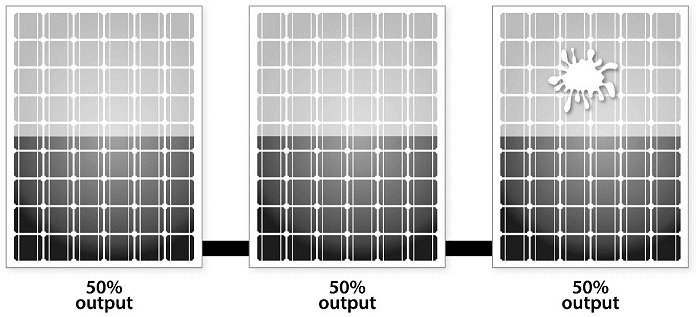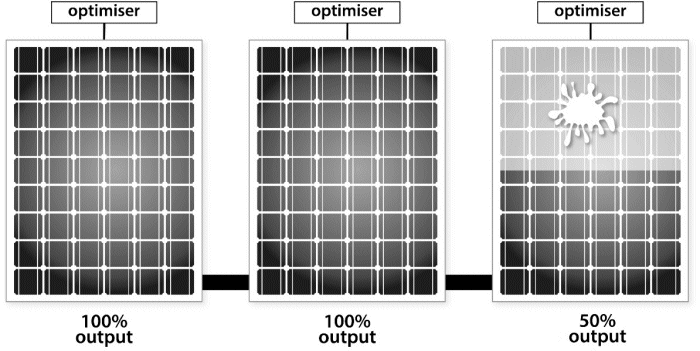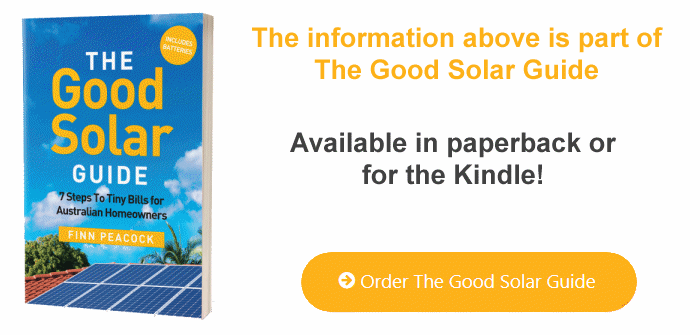STEP 5: Choosing Your Hardware
← Batteries & Solar Payback | The Good Solar Guide Contents | Panel Level Optimisation →
When you get quotes for solar power, you’ll be presented with lots of different choices of solar panels and inverters. How on earth does a non-solar expert decide which technology types to choose and which brands to go with?
This section will walk you through different technologies and brands, so you can make an informed decision about what panels will go on your roof for the next 30 years, and which inverter all your solar energy will go through.
First we need to understand how solar panels work together to power your home.
You’ve probably never sat down and thought about how electrical current flows through a bunch of solar panels, and you probably never thought you’d have to. But if you’re going to make an informed decision about buying solar, you need to appreciate that a conventional solar panel system has one big shortcoming: if shade falls on just one panel, all the other panels in the same ‘string’ will be affected.
Let me illustrate the problem with a picture of some bird poo: see Figure 5.1. Here are three solar panels in a row, and one has been crapped on, reducing its power output by 50%. Notice how, although only one panel has a poo problem, all three panels have had their power reduced.

Figure 5.1 Three solar panels connected together; if one loses output, they all lose output.
This is what happens in a non-optimised solar system. You could have 12 panels in a single string, all being affected by a problem with a single panel. I’ll explain exactly why this happens in a minute.
If you pay extra and opt for a ‘panel-optimised’ system (as in Figure 5.2), the problem is solved. That is, the bird-poo problem is confined to the pooey panel:

Figure 5.2 A panel-optimised system confines the ‘poo problem’ to just one panel.
The first solar-hardware decision you have to make (because it can affect the type of inverter and panels you buy) is whether you want:
- a conventional system, known as ‘string-level optimisation’, where a problem with one panel in a string affects all the others, or
- a more expensive system, where a problem with one panel doesn’t affect the others. This is called ‘panel-level optimisation’, which I’ll shorten to PLO (with apologies to Yasser Arafat)
Online resource: To learn why solar panels bring each other down in a conventional system, head here: solarquotes.com.au/plo
← Batteries & Solar Payback | The Good Solar Guide Contents | Panel Level Optimisation →
Questions or feedback about the content on this page? Contact me.
